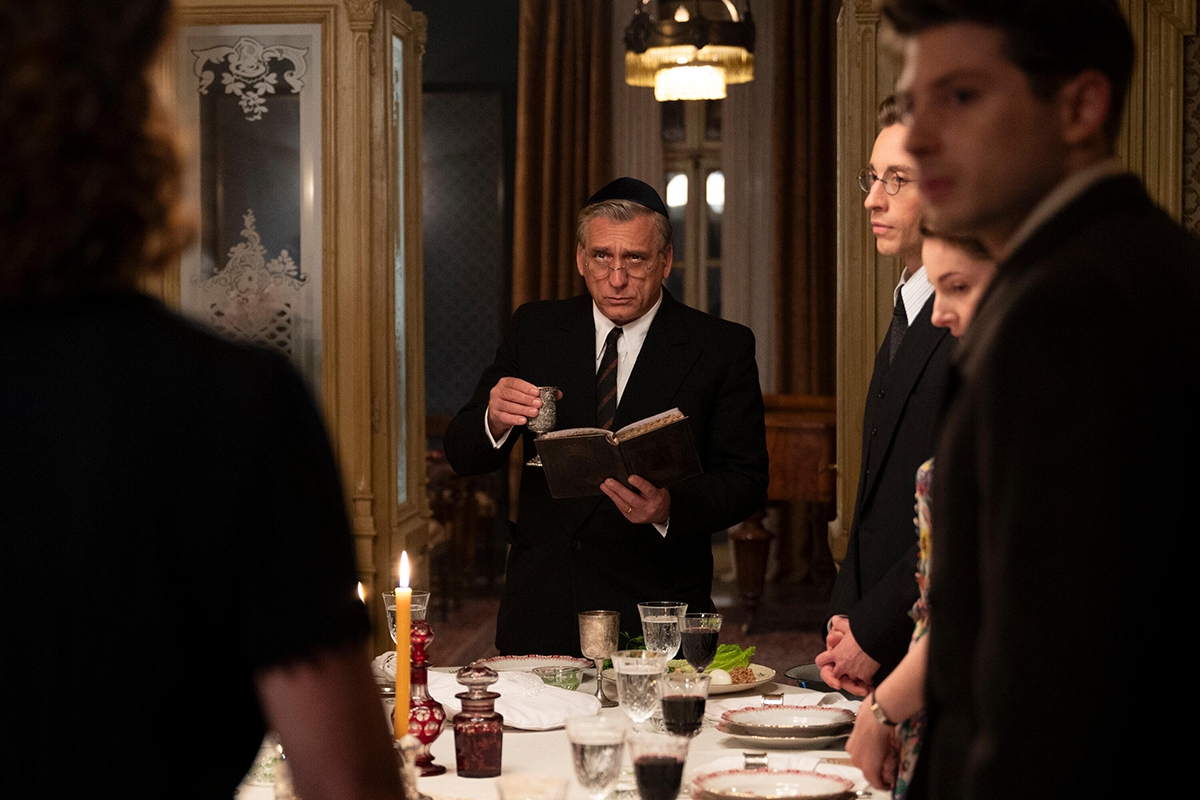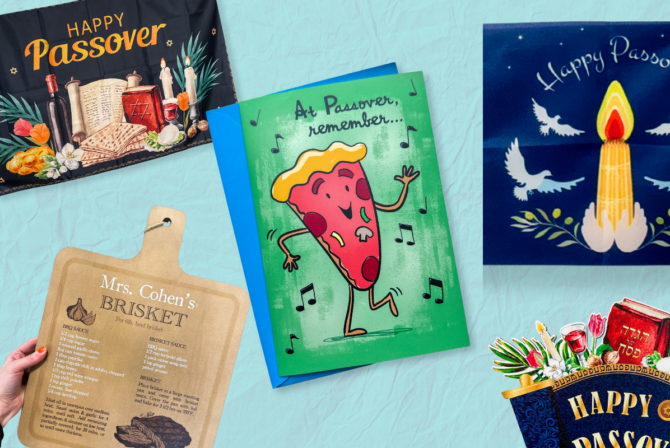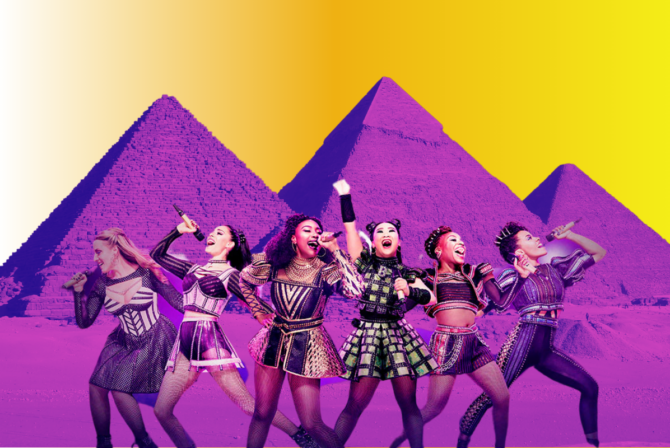In the past year or so, while watching excellent Holocaust-themed shows like “A Small Light,” which centers Miep Gies, the secretary who helped hide Anne Frank’s family in Amsterdam, and “Transatlantic,” about the founding of the Emergency Rescue Comittee — and even movies like the recent “One Life” — something always niggled at me. Yes, these are powerful tales and yes, their protagonists have so many great lessons to offer, but why must so many stories told about the Holocaust, even “Schindler’s List,” focus on non-Jewish heroes?
This was a trend that Erica Lipez, the showrunner of Hulu’s new series “We Were the Lucky Ones,” noticed when director Thomas Kail brought her on to work on an adaptation of Georgia Hunter’s family saga, which tells the story of the Jewish Kurc family and how they survived the war.
“Being Jewish myself, I don’t think until I really started working on this project that I realized how many Holocaust projects don’t center the Jewish experience,” Lipez told Kveller in a Zoom interview earlier this month.
Lipez and her team, which included Kail and Hunter, were really intentional in their attempt to create a show that does just that, focusing primarily on the lives of 12 Jewish people and the luck and ingenuity that helped them survive. It is a visceral, touching, sweeping and profoundly human show, one of the best you’ll see all year, and the Jewish representation in it is deeply thoughtful, perhaps more than any show I’ve ever seen.
“I feel like this family, to have these 12 distinct Jewish voices at the center of it, is a real unusual opportunity, and I hope that there is something about it that feels different to people when they watch it — that they realize they maybe haven’t seen that perspective before,” Lipez said. “They were the victims of this event, but they were humans living through it, and they should be heard.”
The cast of “We Were the Lucky Ones” is mostly Jewish. Family matriarch and patriarch, Sol and Nechuma, are played by Lior Ashkenazi and Robin Weigert. The youngest Kurc, Halina, is played by Joey King, in what is the Jewish actress’s most Jewish role to date. Logan Lerman, who we have previously seen fighting Nazis in “Hunters,” is Addy, the most artistic of the bunch, a musician who lives in Paris. Amit Rahav of “Transatlantic” plays Jakob, the steadfast second youngest sibling, in love with his camera and his childhood sweetheart, Bella. Hadas Yaron, of “Shtisel” and “Fill the Void” fame, plays the eldest daughter Mila, and is reunited with Michael Aloni who plays her husband, Selim, a doctor. The oldest son, lawyer Genek, played by Henry Llyod-Hughes, falls for Herta, played by “Fauda” star Moran Rosenblatt.
We first meet them all in a Passover seder that precedes the war, and then again in 1939, in a more subdued holiday observance in the shadow of war.
This show is a fresh way to look at the Holocaust and the suffering through it. It is both incredibly harrowing and incredibly gentle with its viewers. You won’t find any gratuitous violence, but you will find the full weight of the grief and horror of being separated from your loved ones, of not knowing if they’ll survive, of being woken up and kicked out of your home, of fearing for your survival at every given moment.
In some shows, Jewish representation feels cursory — like here, watch a family say a prayer, light some candles, wear a kippah. See? They are Jewish. But the Jewish holiday scenes in “We Were the Lucky Ones” — which includes three seders, one Rosh Hashanah dinner and a Jewish wedding — are all deeply felt and deeply learned. That’s not just because there was a consultant on set to make sure the Polish Yiddish pronunciation was correct, the matzah was the right kind and the haggadah felt appropriate, but because the team in front of and behind the camera all have a connection to the subject matter that’s profoundly personal and that was imbued in every scene.
When we talk about “Jewface” and Jewish representation in pop culture — a subject that I have nuanced feelings about (yes, I was charmed by Bradley Cooper in “Maestro,” and fell in love with the quick-talking Rachel Brosnahan in “The Marvelous Mrs. Maisel”) — people will often say it is an actor’s job to act, to play what they are not.
That is true. And the cast of “We Were the Lucky Ones” play characters very different from themselves. They are acting the living daylights out of every scene, as if their lives are depending on it. And yet, as I talked to Amit Rahav, Michael Aloni, Hadas Yaron, Lior Ashkenazi and Robin Weigert, they all mentioned how, as they sat at that Passover table, they felt like a family. And they all talked about their own Jewish histories, the tendrils that connect them to the Holocaust and other forms of Jewish persecution.
Weigert, who plays family matriarch Nechuma, the granddaughter and great-granddaughter of Polish and German Jews, said filming the show, she realized “the Holocaust is in me.”
But it’s not just the Holocaust. You also feel their lived experiences with family seders — the loudness, the connection, the essence of a Jewish gathering. The cameras roll as the cast improvised their seders scenes, being together in a newfound family. And the result is that these seders feel so real. Maybe not every viewer will notice it, but certainly this kind of emotional accuracy makes the show a better one. Lipez showed us that you can have an authentically Jewish cast and not only not sacrifice one ounce of great craft, but also, in doing so, elevate it.
“We Were the Lucky Ones,” the book and the show, also challenges our preconceptions about the tales of survivors. More often than not, the ones we get to see are those who have survived the horrors of the camps, with images of emaciated bodies, of pure evil and pure victimhood, and the terrible things survivors did to survive. But a lot of people — my family included — survived in similar ways as the Kurc family: outside of camps, in hiding, by escaping, by going underground, by hiding their Jewishness.
Some members of the family stay in Radom, Poland, as long as they can. Some end up in Lvov. Some are sent to Siberia. Some end up in Palestine and some, as far as Brazil. There is not a single scene inside the walls of a concentration camp. It’s a very different, and incredible, tale of survival.
“When the stories are so often centered on other people, saving the Jews or focusing on the oppressors,” Lipez mused in our interview, “it underplays what the Jewish experience was. Yes, there were heroes, and there were daily acts of resistance that were remarkable. Resistance takes so many different forms within this one family and I think it represents a lot of experiences of other Jewish survivors and also those who didn’t survive.”
You will not find a kind of fetishization of the Jewish victim of the Holocaust here, not a chance for non-Jewish viewers to imagine themselves as saviors. This is not the story of our victimhood. You feel too much awe for these characters, and see so much of their strength, to feel much pity for them. This is a story of complex heroism — of those who survived, and those who didn’t. They both faced impossible choices, and they both were impossibly brave — and more often than not, what set the living apart from the dead is one word that you can find in the title of this series, and in the experience of its protagonists. It’s a miserable alchemy of time and place, a curse and a blessing, this thing called luck.
While watching, my own family’s story surfaced in my mind like the maror echoes the bitter tears of our people’s suffering at the Passover seder. It’s the grief I saw in my great-aunt’s eyes when she told me about coming back to her Polish hometown after the war; the coldness of the air in Siberia where I know my grandfather ended up, his family left behind in mass graves. A baby born during the war in exile, much like my grandmother did, takes its first breaths. I felt it all. The tears I cried along as I watched the characters on screen were of grief and longing, but also of deep connection and a sense of feeling seen.
On Passover, our people tell the story of the Exodus out of Egypt in a way that, we hope, helps us find a connection to the present. In “We Were the Lucky Ones,” we get to relive a story of our people, a story of one family’s forced exodus from their homes who go on a journey of survival. It is a deeply connected tale, well-spun and full of meaning. It is beautiful Jewish art about the pain we always carry with us. And perhaps most refreshingly, it is a tale of Jewish triumph.








